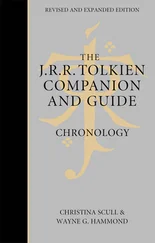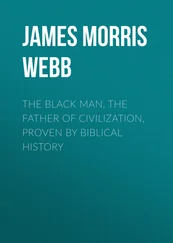Biblical Chronology
Valeriy Sterkh
Translator Evgeniy Terekhin
Translator Valeriy Sterkh
© Valeriy Sterkh, 2021
© Evgeniy Terekhin, translation, 2021
© Valeriy Sterkh, translation, 2021
ISBN 978-5-4493-3768-9
Created with Ridero smart publishing system
Throughout centuries, numerous attempts have been made to recreate biblical dates and chronology. Yet there is still no consensus in this regard – for various reasons. This book briefly discusses the problems of the Old Testament chronology and provides a more detailed timeline of the era of Jesus Christ. The main flaw of the various existing versions of the New Testament chronology is that they do not completely align with the Four Gospels and the historical evidence. To solve this problem, we had to re-create all the chronological calculations to see how well they correlate with each other. The results was highly satisfactory. The calculations and explanations presented here are simple, so anyone can verify them. In conclusion, the book addresses some of the issues related to reforming the Church calendar and suggests possible solutions.
Section 1. The basics of chronology
Chronology is always based on a certain calendar. And calendars are based on solar and lunar cycles. This simple truth we find in the very first pages of the Bible:
“And God said, Let there be lights in the firmament of the heaven to divide the day from the night; and let them be for signs, and for seasons, and for days, and years: And let them be for lights in the firmament of the heaven to give light upon the earth: and it was so. And God made two great lights; the greater light to rule the day, and the lesser light to rule the night: he made the stars also. And God set them in the firmament of the heaven to give light upon the earth, And to rule over the day and over the night, and to divide the light from the darkness: and God saw that it was good. And the evening and the morning were the fourth day” (Gen 1:14—19).
There are three types of calendar systems: solar, lunar and lunisolar. These systems have engendered many types of calendars. Below we will consider only those that are necessary for recreating the biblical chronology.
In 46 BNE (Before New Era), the Roman calendar was reformed by Gaius Julius Caesar (100 – 44 BNE). This solar calendar was based on the average duration of the year equal to 365.25 days. Since the calendar year can only consist of a whole number of days, it was agreed that the standard year would consist of 365 days, and every fourth (leap year) would be 366 days. The calendar was introduced on January 1, 45 BNE – on a new moon. In the days of Octavian Augustus (63 BNE – 12 NE), the Julian calendar underwent slight modifications and since then was used in a fixed form in many countries, until it was replaced by the Gregorian calendar.
The duration of the months in the Julian calendar is as follows: 1. January – 31 days, 2. February – 28 days (leap year – 29 days), March – 31 days, 4. April – 30 days, 5. May – 31 days, 6. June – 30 days, 7. July – 31 days, 8. August – 31 days, 9. September – 30 days, 10. October – 31 days, 11. November – 30 days, 12. December – 31 days.
In the age of Jesus Christ, the Julian calendar was in wide use. Later this calendar was adopted by the Christian Church. In light of this, and also because of its simplicity and convenience, we will primarily use the Julian calendar dates in making our calculations.
Counting days according to the Roman calendar
The ancient Romans used a special system for counting days in a given month. The first day of the month was called “calends” (calendae or kalendae). The middle day of the month was called “idus”. The ninth day before idus was called “nona” (nonae), counting inclusively. Initially, calends, nones, and idus roughly coincided with the new moon, the first quarter of the moon, and the full moon, respectively. With time, however, this correlation was broken. Yet the traditional naming of days in this way remained intact for a long time. The day before calends, nones, and idus was called “eve” (pridie). The remaining days were numbered in the reverse order: so many days before nones, idus, or calends. In the leap year, an additional 366th day was inserted between February 23 and 24. It was called “bis sextum kal. Mart” (“twice sixth before the March calends”). The year was called “annus bissextus”, from which the term “bissextile year” or “leap year” is derived.
This system of numbering days was used for a long time, even after the reform of the calendar by Julius Ceasar.

We have already touched upon the NE designation in relation to the numbering of years (it means “from our era” or “from the new era”). Historically, this reference point was called “the year of Our Lord” (Anno Domini or AD). The origin of this designation is ascribed to the monk Dionysius Exiguus (c. 470 – c. 544 NE). Later it became obvious that Dionysius had made a mistake in his calculations, but the tradition of counting years from this reference point was not discontinued. We will also stay within this framework as we proceed in our study, and all the dates that you will see in this book will correlate with this system, unless otherwise stated. For more information about the era of Dionysius Exiguus see Section 3. In the meantime, let us note that all the years following this reference point are designated as NE (AD), and the years preceding it are designated as BNE (BC). In other words, the 1st year NE is preceded by the 1st year BNE. It is normal for this type of count (historical or chronological), where the “zero year” is absent. But since such a way of counting is not always convenient, the so-called “astronomical year system” was introduced, where the 1st year BNE corresponds to the zero year, the 2nd year BNE corresponds to the -1 NE, and so on. This method is better suited for calculations in general.
Before the introduction of the Anno Domini (AD) designation, there were other reference points too. There were chronologies based on the year of the Olympic Games, as well as on the year since the foundation of Rome, since the beginning of the emperor’s reign, and since “the foundation of the world” (several versions), etc.
Counting days since the foundation of Rome
Before the Era of Dionysius (AD), chronology was often based on the “since the foundation of Rome” reference point. It was called “ab urbe condita” (“since the foundation of the city”). This reference was popularized by Mark Terentius Varro (116 – 27 BNE), and it corresponded to April 21, 753 BNE.
To convert a year “since the foundation of Rome” (a.u.c.) into the year NE, the following formula was used:
R = auc – 753
For example, 750 a.u.c. corresponds to -3 NE according to the astronomical system, or 4 BNE.
Counting days based on Olympic years
One other way of time keeping in the ancient world was to count years relative to the Olympic Games. Since the Olympiads were held once every four years, the years were designated as “the first” (second, third, fourth) since the year of a specific Olympiad. The reference point for the first year of the first Olympiad corresponds to July 1, 776 BNE.
Читать дальше













